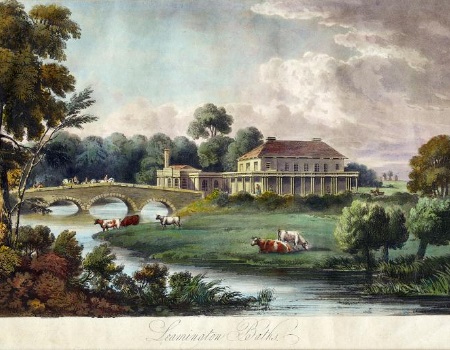
New Guide to the Royal Leamington Spa, the Neighbouring Towns, and Surrounding Country (1839)
Leamington Spa, in the midlands, is situated near the River Leam. As early as the 1600s, various springs were discovered. By 1803 the Earl of Aylesford had a small stone building erected over the original well near the church. This building was demolished in 1813 to make way for the new (and current) stone building.
The medical community was taking note of the springs medical benefits in the late 18th century, so that Leamington Spa was quickly a notable resort for health and wellness. Its popularity saw a need for a larger building. The Pump Room was built in 1814 and would later attract royalty and other notable persons.
There was also the Leamington Spa Charity, founded in 1806, that provided free baths for infirmed people unable to pay the fees.
The Visitors’ New Guide to the Spa of Leamington Priors, and Its Vicinity (1824)
For more on the history of the baths I recommend Moncrieff’s Guide to Leamington Spa (1830).










